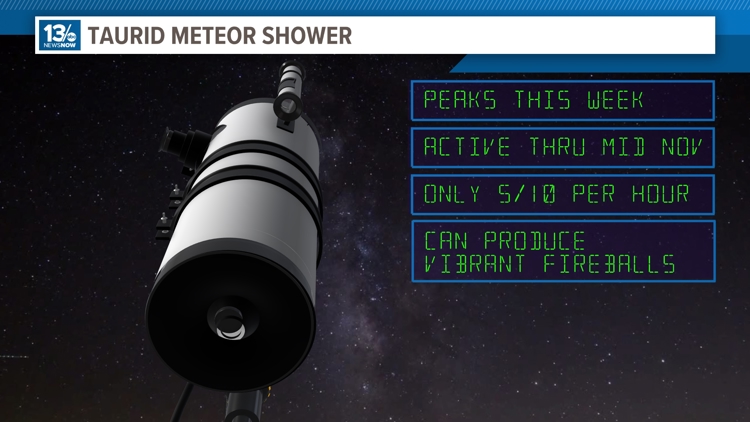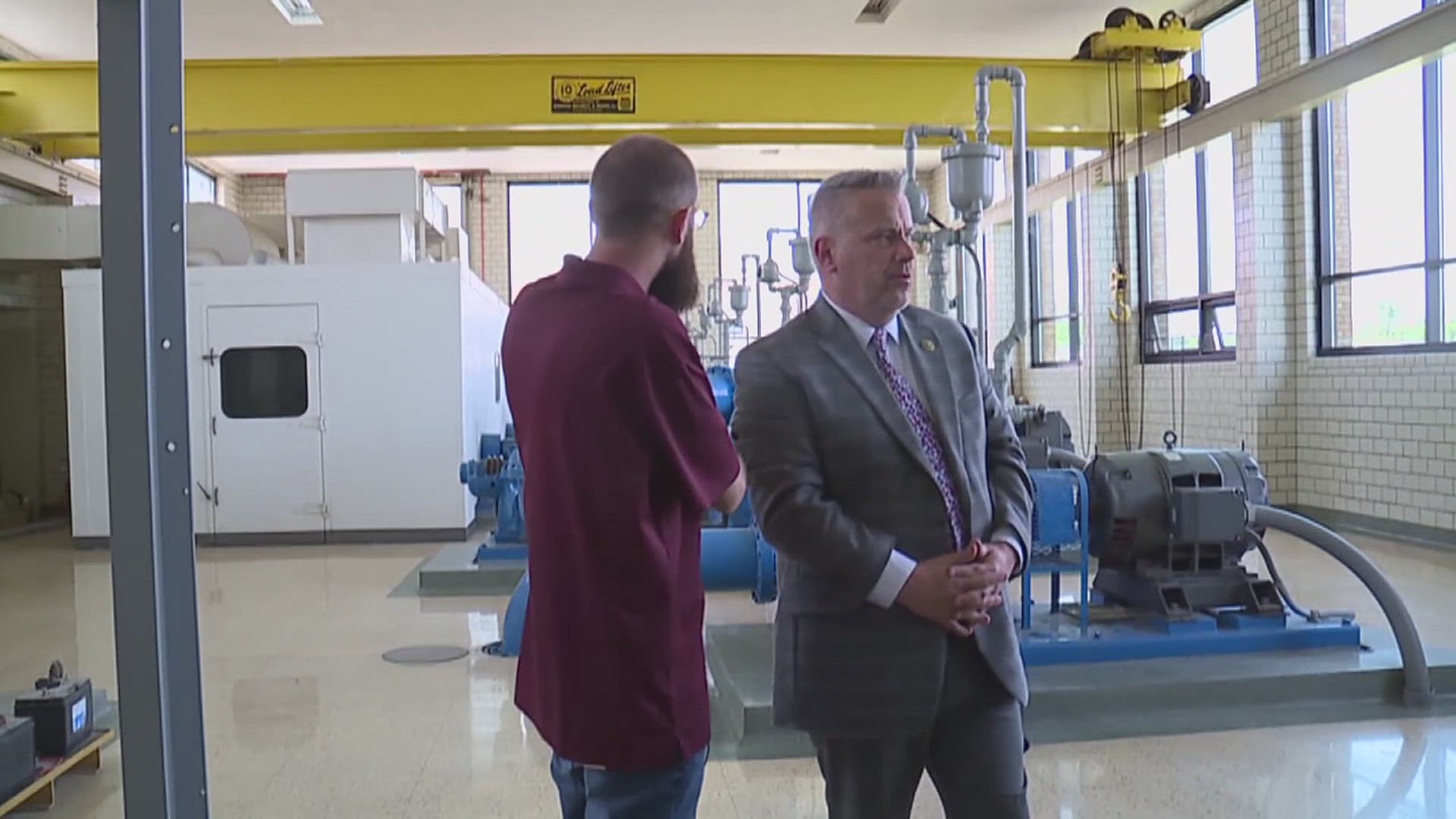NORFOLK, Va. — Every year, from roughly late October through mid-November, the Taurid Meteor Shower peaks. And while The Taurids are not normally a very active meteor shower, they can produce some of the most stunning fireballs of any shower. You just have to be very lucky to spot one.
Normally, the weak meteor shower goes unnoticed. Even under the best conditions, you might see 5 to 10 meteors per hour. And it’s a relatively long-lasting shower, going from late September until mid-December, making the peak of the shower a little more difficult to pin down.
But the Taurids have something that makes this shower special compared to the other showers. Even though the rate of meteors per hour is very low, the Taurids are known for a high proportion of bright fireballs. Oftentimes, they will even make the news, captured on dash cams and doorbell cameras.
Fireballs are typically caused by meteors more than three feet long, making them appear brighter as they burn up in Earth’s atmosphere, according to NASA. A larger meteor takes longer to burn up, creating a brighter, longer streak across the sky.
Additionally, the Taurids move at a relatively slow speed, about 19 miles per second. This means those rare, bright fireballs have a long line of flight. And if you track that line of flight across the sky, would intersect close to the Pleiades side of Taurus, which is how the shower gets its name.
If you plan on trying to catch any meteor shower, and especially the Taurids, you will need to pack a little patience. Get a comfortable chair, bundle up, and look overhead.



